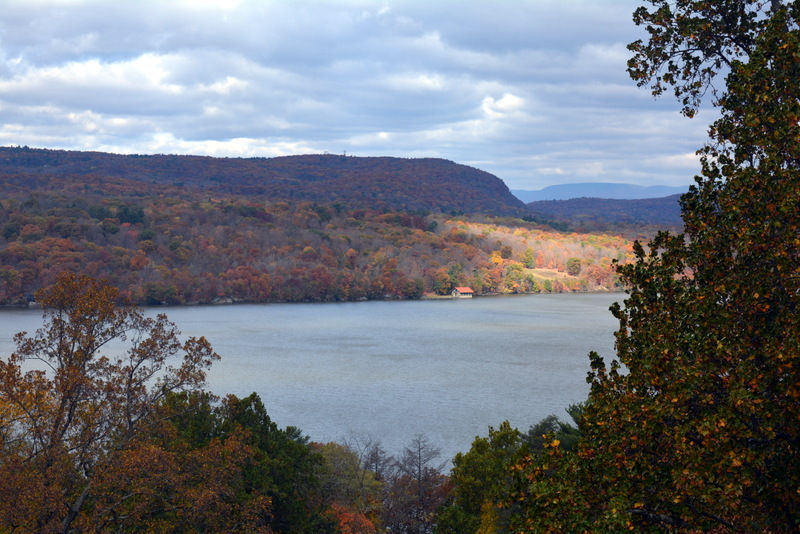How to Retreat to Nature like a Vanderbilt or President
- Mikah Meyer
- Nov 10, 2016
- 3 min read
Units #65 - 67 / 413
- Home of Franklin D. Roosevelt National Historic Site
- Eleanor Roosevelt National Historic Site
- Vanderbilt Mansion National Historic Site

On TV, New York City looks glamorous any time of the year.
But as anyone who’s visited the Big Apple will tell you, there are many aspects of the city that make it unbearable.
The noise.
The smells.
The overloaded cell towers (OK, maybe that’s just a millennial problem).
But there’s one issue most modern visitors wouldn’t think of:
Disease.
According to my tour guide at the Home of Franklin D. Roosevelt National Historic Site, 19th-century and early 20th-century NYC allowed disease to fester in ways that made it undesirable to be in from spring to fall.
For those with means, this meant that a home outside the city--but still within proximity for business needs—was the perfect way to be of the city, but not in the city.
With railroads being the most convenient transportation of the time, this made the Hudson Valley--and the train line that ran parallel to the Hudson River--particularly desirable.
Of note to the National Park Service are three significant residences that surround the town of Hyde Park, New York. With “billion dollar views,” as the vista below is affectionately called, it became home for Vanderbilts and Roosevelts.

While the Vanderbilt Mansion National Historic Site is the most opulent of this trio of NPS sites, and represents well the Gilded Age, it is the FDR home and the Eleanor Roosevelt National Historic Site which hold the largest political influence.
At the Springwood, Val-Kill, and Top Cottage locations preserved by the NPS, stories abound of royalty, politicians, and journalists taking part in what the Roosevelts called “Picnic Diplomacy.” That of making their personal homes open to those they hoped to engender toward their political wills.
While the Home of Franklin D. Roosevelt National Historic Site has been the most heavily visited of my national park tours thus far (even on a Monday, the parking lot was packed), it might also be because the property houses Roosevelt’s Presidential Library—the first Presidential Library to be created and for a man who was the only person elected to the presidency on four separate occaissions.
This combination of four historic sites makes the Hudson Valley and Hyde Park a dream for a history afficianado. Not only because Roosevelt’s Presidential Library became the model for storing president’s documents in a centralized location, but because—when visited in the fall season—it allows for a brisk and beautiful walk along the trees that made this land so dear to its famous residents.


Want more parks? Help this project by contributing below:
Upcoming Units (COMMENT with recommendations. What should I do at each park? Local interesting detours? Food stops?)
NE Pennsylvania to Connecticut to New York to Puerto Rico to US Virgin Islands
-Upper Delaware Scenic & Recreational River
-Steamtown National Historic Site
-Delaware Water Gap National Recreation Area
-Middle Delaware National Scenic River
-Weir Farm National Historic Site
-African Burial Ground National Monument
-Castle Clinton National Monument
-Federal Hall National Memorial
-General Grant National Memorial
-Governors Island National Monument
-Hamilton Grange National Memorial
-Sagamore Hill National Historic Site
-Saint Paul's Church National Historic Site
-Statue of Liberty National Monument (includes Ellis Island)
-Stonewall National Monument
-Theodore Roosevelt Birthplace National Historic Site
-San Juan National Historic Site
-Buck Island Reef National Monument
-Christiansted National Historical Park
-Salt River Bay National Historical Park & Ecological Preserve
-Virgin Islands Coral Reef National Monument
-Virgin Islands National Park
The journey thus far:











There’s something powerful about stepping away from modern life and immersing yourself in natural surroundings—it gives you a chance to reflect, find inner peace, and strengthen your connections. For those of us seeking a similar experience, link here to explore places like wheelofbliss, where you can experience that same deep reconnection with nature, away from the daily hustle. It’s a chance to return feeling more centered, inspired, and ready to take on life’s challenges with a fresh perspective.